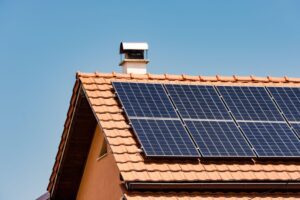Our simple tutorial on how to mount solar panels on tile roof will help you get the job done in no time.
Solar energy has become an increasingly popular and sustainable choice for homeowners looking to reduce their carbon footprint and energy bills. If you have a tile roof, you might wonder how to harness the power of the sun without compromising the integrity of your roof.
Assessing the Roof
it’s crucial to assess the condition of your tile roof. Inspect for damaged or loose tiles that need replacement or repair. A well-maintained roof will ensure a sturdy foundation for your solar panel system.
Determine the optimal location on your roof for solar panels. South-facing roofs generally receive the most sunlight throughout the day, maximizing energy production. However, east or west-facing roofs can also be suitable depending on your geographical location.
Ensure your tile roof is structurally sound to support the additional weight of solar panels. If there are any concerns about its strength, consult with a structural engineer for reinforcement options.
Choose the Right Solar Panels
There are various types of solar panel systems, including photovoltaic (PV) panels and solar thermal systems. PV panels are the most common choice for residential installations on tile roofs due to their ease of installation.
Consider factors such as your energy consumption, budget, and available space when choosing a solar panel system. It’s essential to select a system that meets your specific needs.
Below you will find the steps on how to mount solar panels on tile roof.
Before you begin installation, make sure you have all the required tools and materials. This includes solar panels, mounting brackets, screws, electrical wiring, and safety equipment. Invest in high-quality components to ensure the longevity of your system.
How to Mount Solar Panels on Tile Roof
Clean your tile roof thoroughly to remove debris and moss. Repair any damaged tiles and replace them as needed. A clean, well-maintained roof provides a better surface for solar panel installation.
Apply a waterproof underlayment beneath the solar panel installation area to prevent water infiltration. Proper sealing and waterproofing are essential to protect your roof and interior.
Safety is paramount during solar panel installation. Install roof anchors and use harnesses and lifelines to prevent accidents while working on the roof.
There are different types of mounting brackets designed specifically for tile roofs. Choose brackets that are compatible with your roof type and provide a secure attachment point for the panels.
Follow the manufacturer’s instructions for installing the mounting brackets. Ensure proper alignment and spacing to accommodate your solar panels.
Position the solar panels on the mounting brackets according to the layout plan. Ensure they are angled for optimal sunlight exposure throughout the day.
Securely attach the solar panels to the mounting brackets using the provided hardware. Follow the manufacturer’s guidelines for proper installation.
Double-check that all panels are securely fastened to the mounting brackets. Confirm that there are no loose components that could pose a hazard.
Carefully route electrical wiring from the solar panels to the inverter and electrical panel. Follow electrical codes and safety standards to prevent accidents and ensure a reliable electrical connection.
Installing Solar Panels on Concrete Tile Roof
To attach your system, your installer can first place S-hooks beneath the tile. The tiles would be momentarily removed by your installer, who would then insert the hooks into the roof from below, place the tile back over the mount, and rack the system from there.
The second choice is referred to as a comp-out, in which your installer will take out the tiles where you want to add solar panels before laying down composite shingles to put the array in place. Spanish tile would be used to finish the space around the array once it is erected for a more aesthetically pleasing appearance.
Some concrete tiles may break during installation because they can be fragile. Don’t worry, your installer will replace every broken tile to ensure that your roof remains intact and maintains its fine looks, but this will increase the project’s overall cost.

